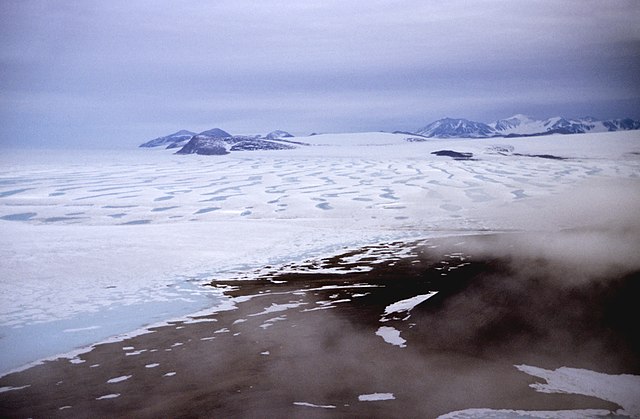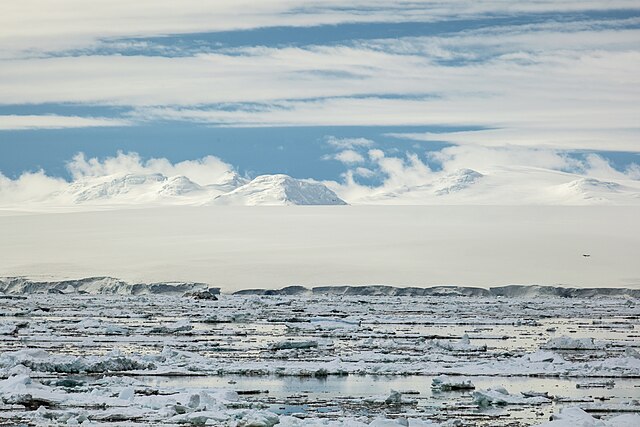The Ward Hunt Ice Shelf is the largest ice shelf in the Arctic, located near Ward Hunt Island, on the north coast of Ellesmere Island, Nunavut, Canada. During the 20th century the Ellesmere Ice Shelf broke up into six separate shelves, the largest being Ward Hunt. Ward Hunt Ice Shelf is currently about 400 km2 (150 sq mi) in size, and has been in place for approximately 4,000 years as part of a continuous ice shelf that encompassed the northern coast of Ellesmere Island until the beginning of the twentieth century. In 2005 one of the other shelves, the 65 km2 (25 sq mi) Ayles Ice Shelf, calved completely.
Ward Hunt Island, Ward Hunt Ice Shelf and Cape Columbia, Ellesmere Island, Canada. View towards east.
Ward Hunt Ice Shelf, north of Ellesmere Island, Canada. View from Ward Hunt Ice Rise towards west, July 1988.
An ice shelf is a large platform of glacial ice floating on the ocean, fed by one or multiple tributary glaciers. Ice shelves form along coastlines where the ice thickness is insufficient to displace the more dense surrounding ocean water. The boundary between the ice shelf (floating) and grounded ice is referred to as the grounding line; the boundary between the ice shelf and the open ocean is the ice front or calving front.
View of the Larsen Ice Shelf grounding line between Mamelon Point and Hodges Point along the Foyn Coast of the Antarctic Peninsula. The floating ice shelf is in the left foreground, and the grounding line is visible as an abrupt change in surface slope due to flexure caused by the buoyancy force where the ice reaches flotation.
Some named Antarctic iceshelves.
Ice shelf extending approximately 6 miles into the Antarctic Sound from Joinville Island
Panorama of Ross Ice Shelf






